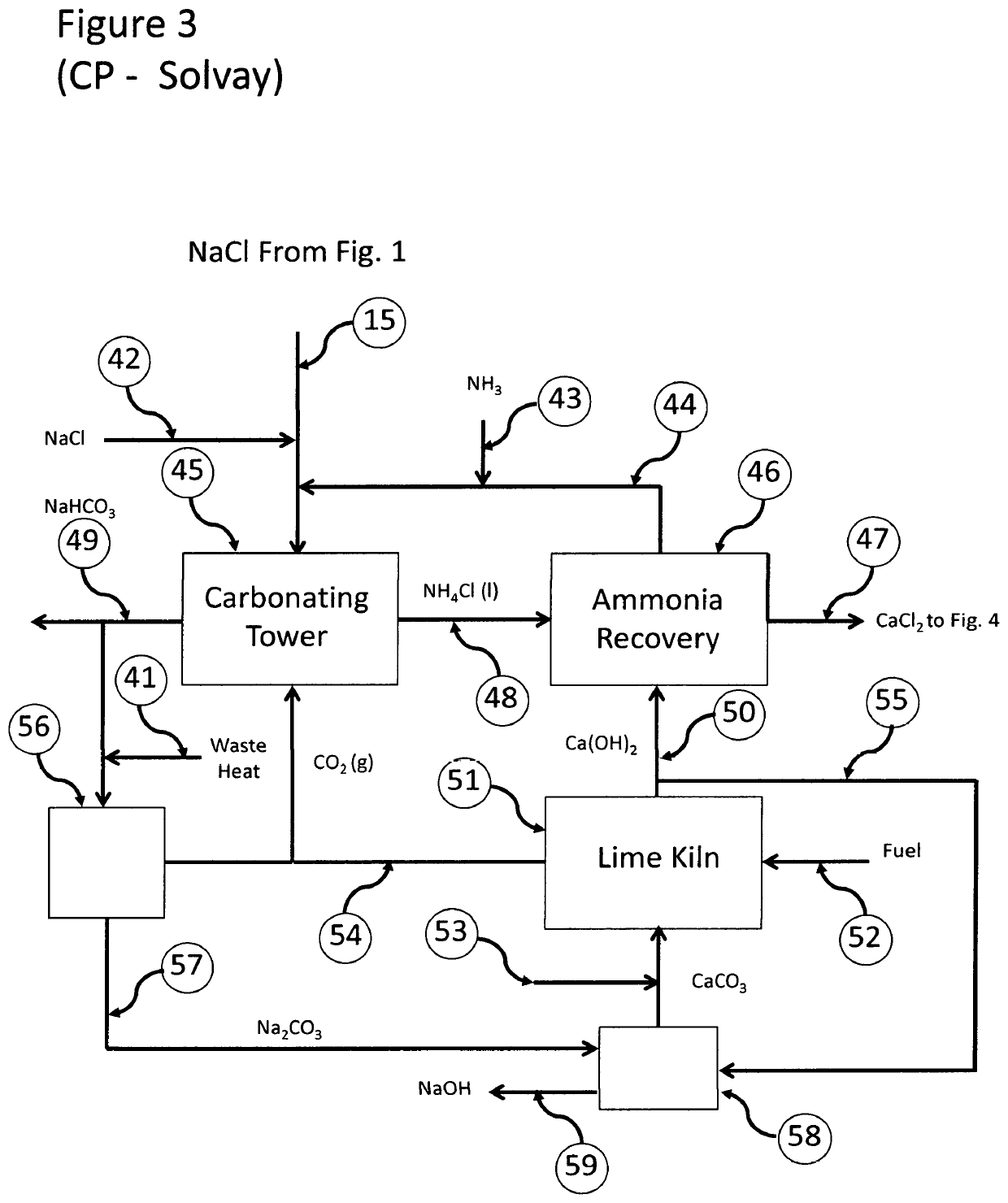Recovery of valuable resources from produced water and coal combustion products
a technology of produced water and coal combustion products, which is applied in the nature of treatment water, water treatment multi-stage treatment, energy input, etc. it can solve the problems of large quantities of pw, insufficient progress in solving major environmental problems, and high cost of treating these waste streams. achieve the effect of high value of naoh, cost effective recovery of concentrated metals, and improved oxidation of elemental mercury
- Summary
- Abstract
- Description
- Claims
- Application Information
AI Technical Summary
Benefits of technology
Problems solved by technology
Method used
Image
Examples
Embodiment Construction
[0104]While this invention is susceptible to embodiment in many different forms, there is shown in the drawings and will herein be described in detail specific embodiments, with the understanding that the present disclosure of such embodiments is to be considered as an example of the principles and not intended to limit the invention to the specific embodiments shown and described. In the description below, like reference numerals are used to describe the same, similar or corresponding parts in the several views of the drawings. This detailed description defines the meaning of the terms used herein and specifically describes embodiments in order for those skilled in the art to practice the invention.
[0105]FIG. 1 shows a schematic diagram of the SSP process used to pretreat PW prior to the CPs shown in FIGS. 2 and 3 below. PW (1) flows into an oil water separator (2) that removes oil (3) and flows oil free PW (4) to an evaporator (5). The preferred method for removing oil from the PW...
PUM
| Property | Measurement | Unit |
|---|---|---|
| salinity | aaaaa | aaaaa |
| particle size | aaaaa | aaaaa |
| sparingly soluble | aaaaa | aaaaa |
Abstract
Description
Claims
Application Information
 Login to View More
Login to View More - R&D
- Intellectual Property
- Life Sciences
- Materials
- Tech Scout
- Unparalleled Data Quality
- Higher Quality Content
- 60% Fewer Hallucinations
Browse by: Latest US Patents, China's latest patents, Technical Efficacy Thesaurus, Application Domain, Technology Topic, Popular Technical Reports.
© 2025 PatSnap. All rights reserved.Legal|Privacy policy|Modern Slavery Act Transparency Statement|Sitemap|About US| Contact US: help@patsnap.com



